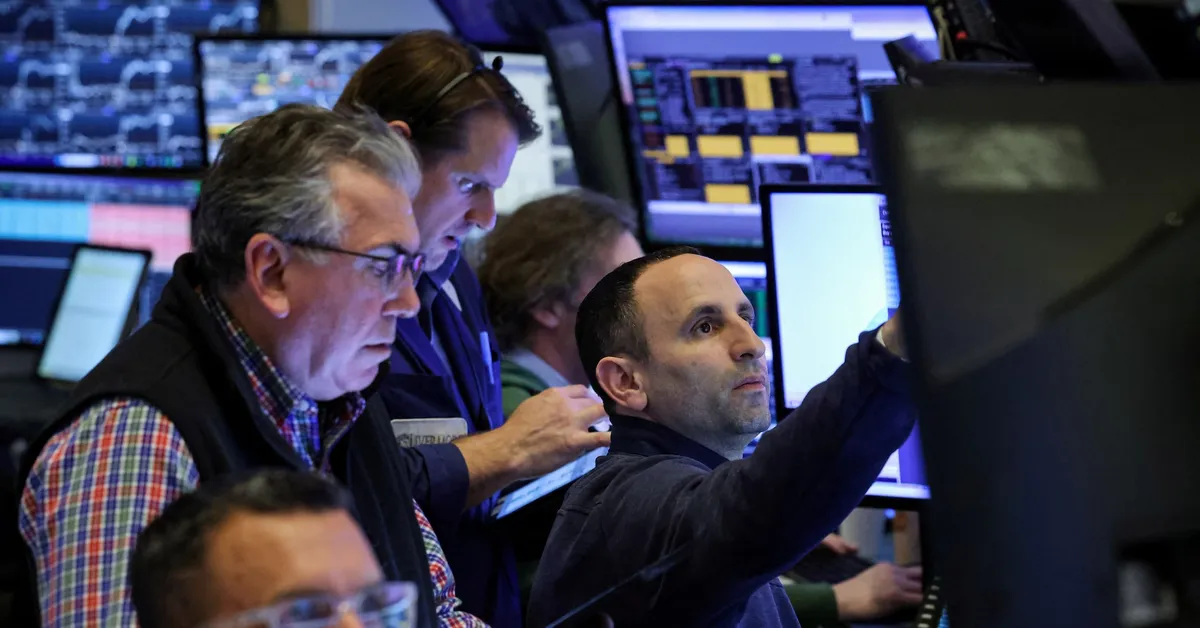
The recent selloff in Treasuries has sent shockwaves through the financial markets, as investors react to newly implemented tariffs. This turmoil has led to significant dislocations in the world’s largest bond market, prompting hedge funds to unwind various debt-fueled bets, raising alarms about potential long-term damage to U.S. financial markets. Market participants, including brokers, traders, and investors, described the selloff as orderly; however, indicators such as bid-ask spreads—the difference between buyers' and sellers' asks—began to widen, with some trading desks reporting bid-ask spreads that were double their usual levels.
On Wednesday, Treasury yields saw a slight retraction after President Donald Trump's unexpected decision to temporarily pause tariffs. Despite this, yields were still higher for the day, reflecting the volatility experienced throughout the week. The surge in yields marked the most significant weekly increase since 2001, with investors and analysts drawing parallels to the chaotic cash scramble of March 2020. During that period, a crash in the Treasury market compelled the Federal Reserve to intervene with an unprecedented $1.6 trillion bond-buying initiative.
Bill Campbell, a portfolio manager for DoubleLine's global bond strategy, noted that trading conditions were particularly challenging overnight on Tuesday. Hedge funds began unwinding relative value trades—strategies that leverage debt to capitalize on small price discrepancies among similar assets. The resulting unwind strained bank balance sheets and signaled potential stress within the financial system. "With the overnight selling in Asia and Europe, warning signs emerged that larger issues could arise if the trend continued," Campbell stated.
One market participant, who chose to remain anonymous, revealed that their firm had extended additional financing to clients on Wednesday as some banks scaled back their lending. While the market functioned as intended, participants remained vigilant for signs of stress. The U.S. Treasuries market, valued at approximately $29 trillion, serves as the cornerstone of the global financial system. Disruptions within this market can have far-reaching consequences, potentially impacting financial stability and hindering policymakers' initiatives. Rapidly rising yields could lead to increased borrowing costs for governments, a scenario often referred to as bond vigilantism.
Following his announcement to pause tariffs, Trump remarked on the state of the bond market, stating, "The bond market now is beautiful." However, ongoing dislocations in Treasuries have led some market observers to question whether the damage to U.S. assets could have lasting effects. Analysts from Deutsche Bank expressed concerns about the repercussions for economic growth and foreign investor willingness to finance the U.S. external deficit.
Hedge funds have increasingly become significant players in the Treasury market, leveraging their positions in short-term repo markets to enhance returns. As of December, hedge funds had accumulated $2.5 trillion in borrowing in the repo market, according to the Treasury's Office of Financial Research. As the market sold off, some of these trades faced mounting pressure, prompting demands for additional collateral from counterparties. Symon Drake-Brockman, co-founder of Pemberton, explained that in volatile conditions, lenders may seek extra collateral from hedge funds, leading to unwinding of trades if funds are unavailable.
Despite the tumult, a rates trading desk indicated that de-risking primarily affected long U.S. Treasuries swap spread trades. These trades, which gained popularity amid expectations of banking deregulation, involve betting that the differential between interest rate swaps and Treasuries will widen. Meanwhile, another relative value strategy called the basis trade—which exploits pricing differences between Treasury bonds and their derivatives—has not experienced significant deterioration, according to market sources.
Trading conditions began to stabilize on Wednesday morning as the New York market opened. Dealers reported sufficient capacity, allowing markets to self-regulate without the need for intervention. The situation improved further after a 10-year note auction by the Treasury, showing strong demand for government securities, particularly from foreign investors. This auction helped alleviate some market anxieties. However, the unexpected announcement of the tariff pause left investors contemplating the future direction of the market.
Westpac analysts suggested that the era of U.S. financial exceptionalism may be waning. The ultimate risk-free curve represented by U.S. Treasuries—often considered 'golden collateral'—is facing challenges. As market dynamics evolve, stakeholders are left questioning the future viability of U.S. assets in the global financial landscape.
Reporting by Davide Barbuscia, Carolina Mandl, Shankar Ramakrishnan, Chuck Mikolajczak, and Paritosh Bansal. Editing by Shri Navaratnam.